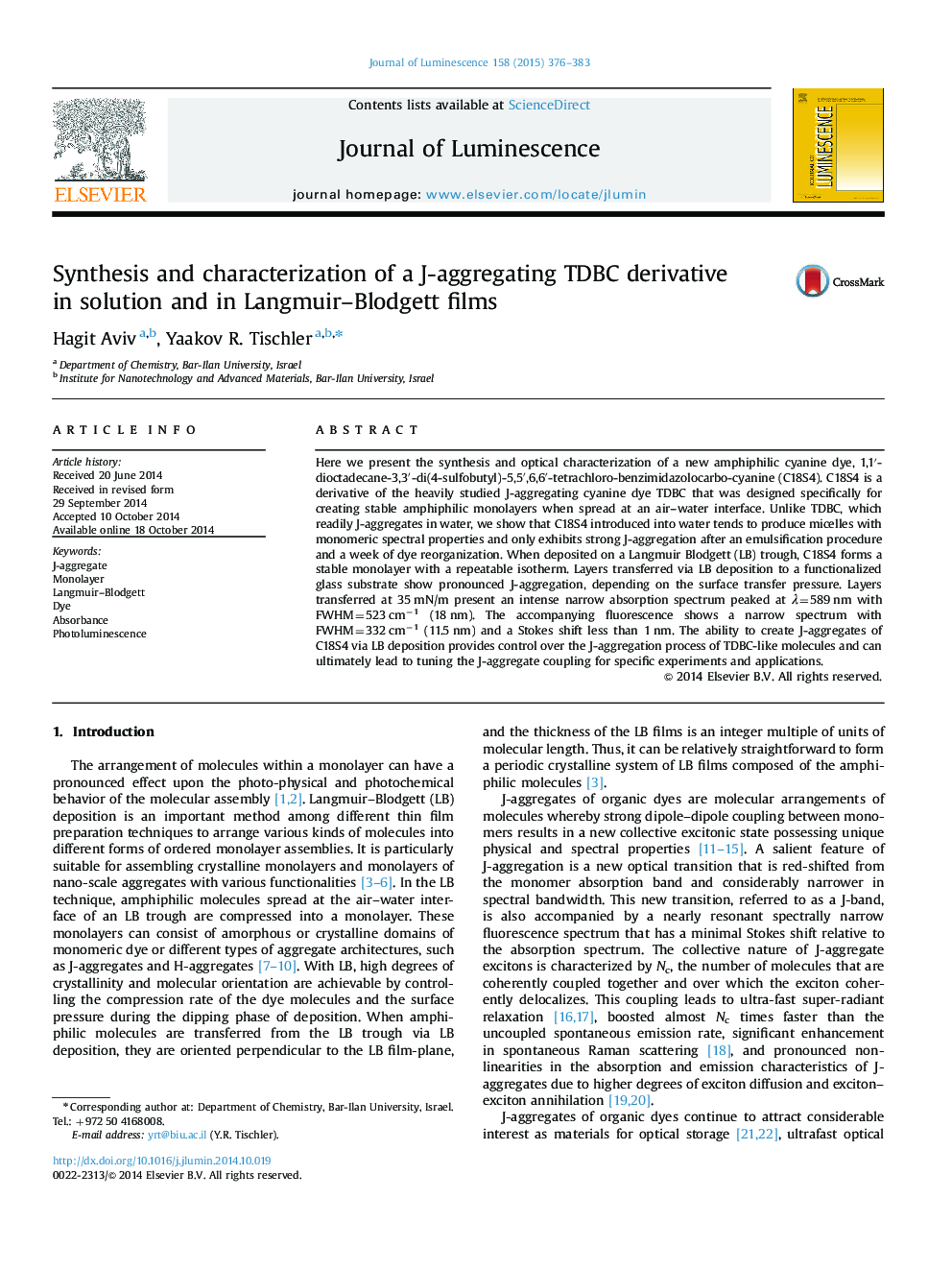| Article ID | Journal | Published Year | Pages | File Type |
|---|---|---|---|---|
| 5399979 | Journal of Luminescence | 2015 | 8 Pages |
Abstract
Here we present the synthesis and optical characterization of a new amphiphilic cyanine dye, 1,1â²-dioctadecane-3,3â²-di(4-sulfobutyl)-5,5â²,6,6â²-tetrachloro-benzimidazolocarbo-cyanine (C18S4). C18S4 is a derivative of the heavily studied J-aggregating cyanine dye TDBC that was designed specifically for creating stable amphiphilic monolayers when spread at an air-water interface. Unlike TDBC, which readily J-aggregates in water, we show that C18S4 introduced into water tends to produce micelles with monomeric spectral properties and only exhibits strong J-aggregation after an emulsification procedure and a week of dye reorganization. When deposited on a Langmuir Blodgett (LB) trough, C18S4 forms a stable monolayer with a repeatable isotherm. Layers transferred via LB deposition to a functionalized glass substrate show pronounced J-aggregation, depending on the surface transfer pressure. Layers transferred at 35 mN/m present an intense narrow absorption spectrum peaked at λ=589 nm with FWHM=523 cmâ1 (18 nm). The accompanying fluorescence shows a narrow spectrum with FWHM=332 cmâ1 (11.5 nm) and a Stokes shift less than 1 nm. The ability to create J-aggregates of C18S4 via LB deposition provides control over the J-aggregation process of TDBC-like molecules and can ultimately lead to tuning the J-aggregate coupling for specific experiments and applications.
Related Topics
Physical Sciences and Engineering
Chemistry
Physical and Theoretical Chemistry
Authors
Hagit Aviv, Yaakov R. Tischler,
